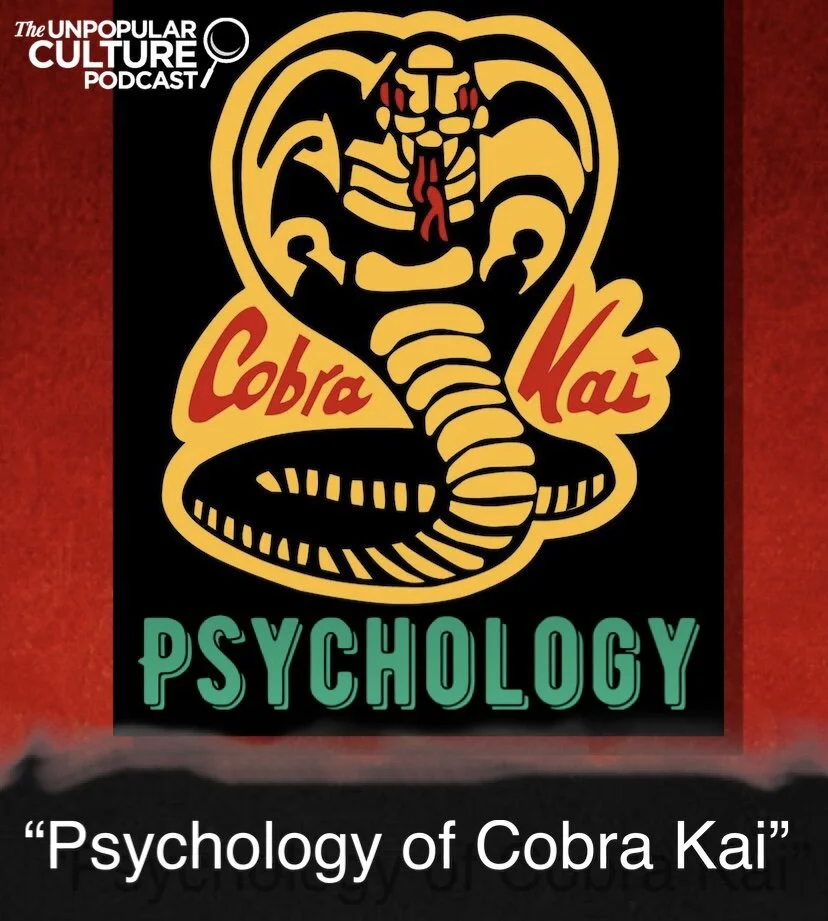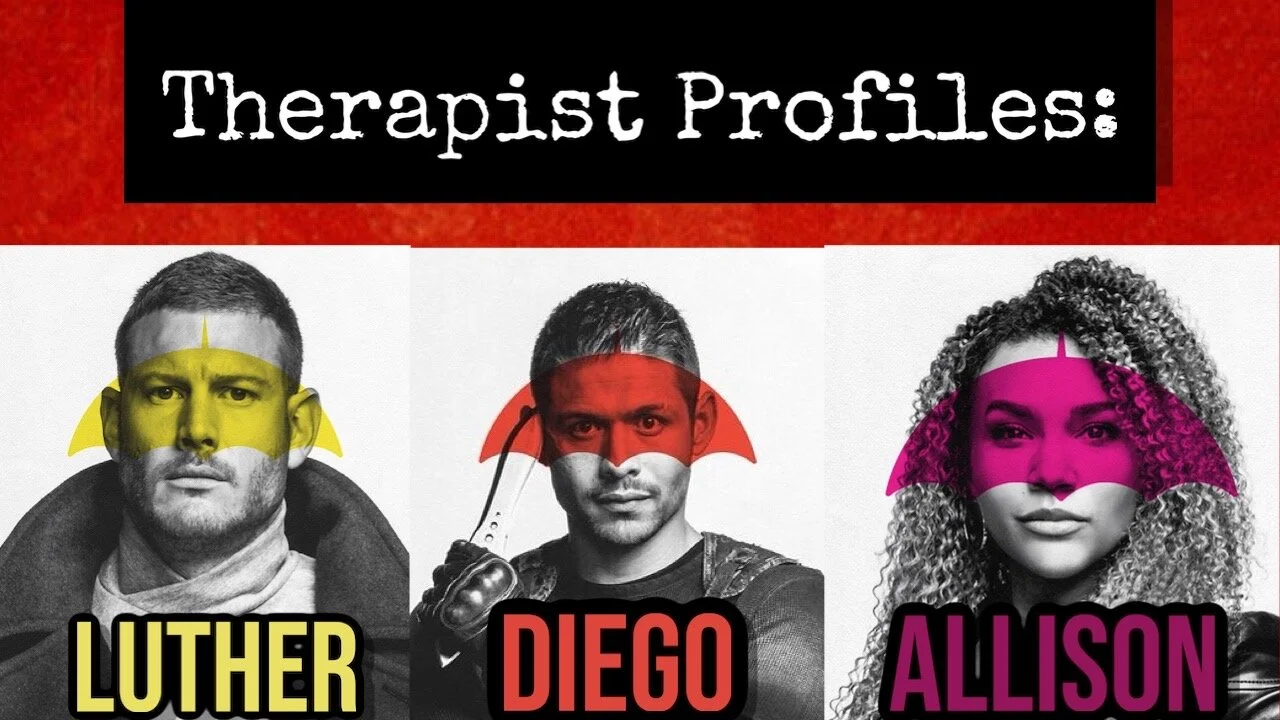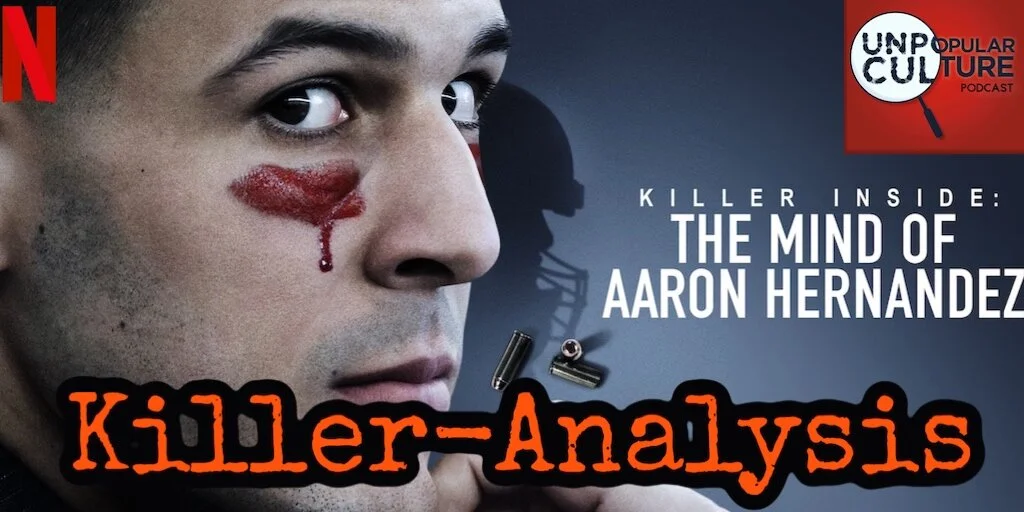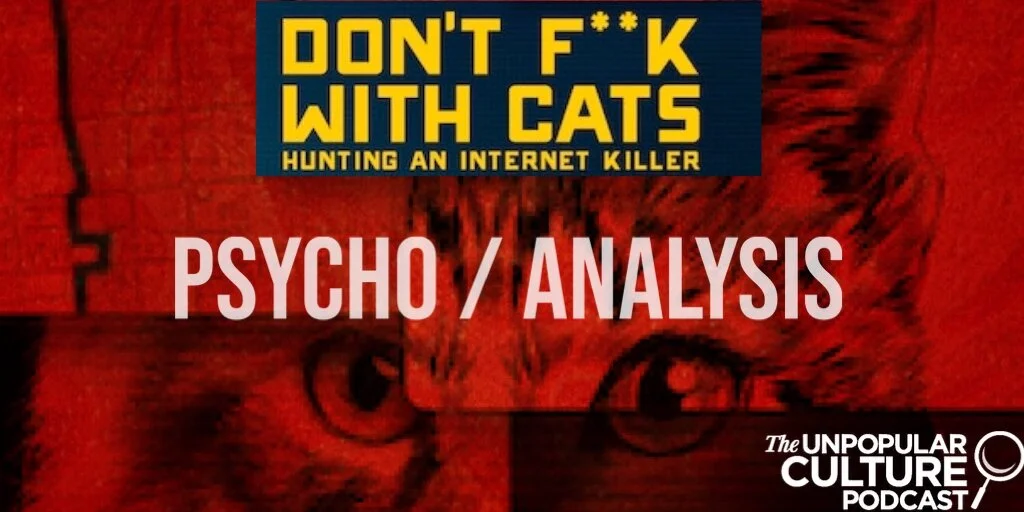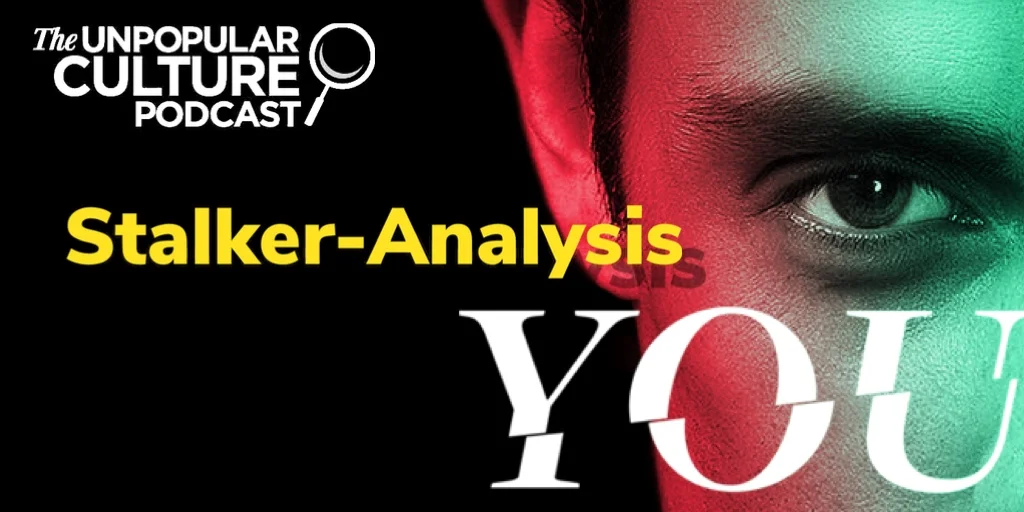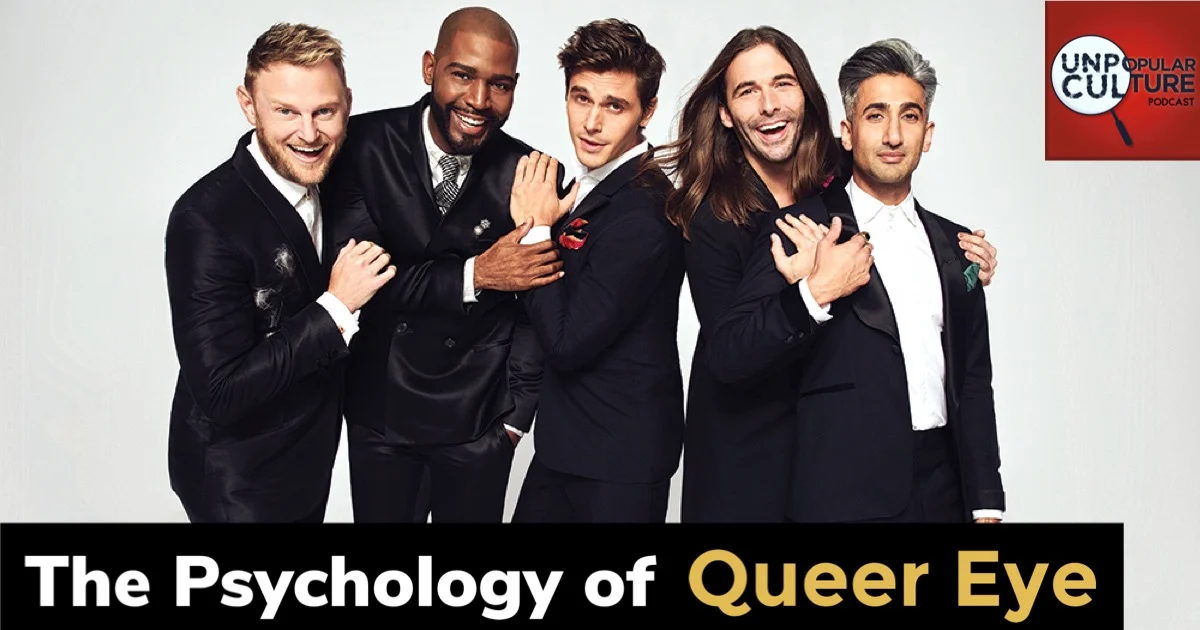We breakdown "The Waldo Moment", the 6th episode of Black Mirror, the politically driven and satirical commentary of a fictional character known as Waldo, and even the psychology behind internet trolling and being anti-status quo.
Read moreEp: 92 - Black Mirror's "San Junipero" - Nostalgia Therapy & Virtual Reality
We return with San Junipero, the most acclaimed episode of Black Mirror series. What year would YOUR San Junipero take place? "San Junipero" is the fourth episode in the third series of the British science fiction anthology television series Black Mirror.
Read moreEp: 90 - The Handmaid's Tale VS The FLDS Cult
A theocratic totalitarian government and a cult. What are the differences in the dystopia of the Handmaid’s Tale Vs. the oppression of the Fundamentalist Latter Day Saint Cult. What are the psychological similarities between them, and how is Warren Jeffs still holding power over his followers?
Read moreEp: 76 -Eternal Sunshine of the Spotless Mind (Movie Review)(Preview)
Psychotherapist and Professor Michael Drane and Team UPC analyze this amazing movie with themes of Breaking up, Dream Analysis, The Unconscious, and Memory.
Read moreEp: 71 - (Stalker Preview Episode) “The Dysfunction of Love"— 10 Notorious Pop Culture Couples
This is "The Dysfunction of Love" Part 2 of our 2 part off-season Valentines Day Podcast about the two sides of love
Read moreEp: 68 - Black Mirror's “Playtest” - The Psychology of Virtual Reality (Stalker Only)
We sit down to recap Season 3, episode 3 of Black Mirror, the notorious horror-gaming episode: "Playtest." It is a Virtual Reality horror episode. Listen to the episode to hear psychological themes, as well as a full recap with behind-the-scenes info.
Read moreEp: 67 - Black Mirror’s “Shut Up and Dance" - The Psychology of Pedophilia
THIS is the next episode in our Black Mirror coverage: Season 4 Episode 3 "Shut Up and Dance." *SPOILERS* for this episode. In this episode we welcome friend of the podcast, Ryan Lee. We discuss in this episode hacking (Money vs. Morality), and the psychology of pedophilia.
Read moreEp: 66 -YEAR ONE Finale (Hate Mail, Secrets & NEW Stuff)
IT HAS BEEN ONE YEAR (ish) SINCE UPC BEGAN. This is a podcast ranking the "Best Of" our first year of episodes! We sit down to tell behind the scenes stories and even respond to some Hate Mail from listeners. FYI: There are TWO BIG Announcements in this podcast that I am going to spoil below.
Read moreEp: 65 - (Stalker Only Episode) Black Mirror Season 4 Breakdown - The Psychology of Black Mirror
To Listen To The Episode By Becoming A Stalker
These are our immediate, un-researched thoughts on Season 4, as it was just released a few weeks ago. We WILL be covering each of these episodes in-depth in the future. In our full breakdown podcasts, for each episode we do a detailed recap, set-up, behind-the-scenes info as well as explanations and an overall psychological study of the episode. WARNING: Below are !Spoilers! for the entirety of season 4 and all six episodes.
But for now, here are some fun easter eggs and our raw opinions on the best television show there is, Black Mirror. —C
"USS CALLISTER" (4:20)
USS Callister is visually breathtaking. Most notably the primary color scheme of their 60's era Star Trek themed costumes as well as the opening fuzzy, colorful, authentic vintage scene. It plays just as a nostalgic episode of the early Star Trek series would, and then when the cookies are free, the set turns to resemble a 2009 J.J. Abrams, modern Star Trek look, with blue tones and lots of pretty lens flares.
The most horrifying part of this episode is when Robert Daly takes Nanette's face away. Michael says in the podcast that it reminds him of the scene in The Matrix where a man's mouth is taken away (as you can see in the graphic I made below). It's not only the simultaneous loss of all your senses, but also the realization that you're not a real person. The dance of watching the cookie intelligence come to understand that they are not real people is fascinating and horrific.
In the scene where Alana, the receptionist, is being rude to Robert Daly, who is trying to get through the front door, she is on her phone and, coincidentally, on the dating app (resembling tinder) from Season 4 episode, Hang the DJ.
Happy Endings seem to be everywhere in Season 4. And we see the very first one here with USS Callister, when Robert Daly bites it at the end.
Expert Opinion: Michael points out that if these cookies are real beings with full sentience, they would probably be much more psychologically drained and honestly, almost to the point of insanity. We've talked about social isolation and brainwashing doing massive damage to a person before on Unpopular Culture. It seems unlikely that the character-copies in Robert Daly's Star Fleet simulation would be so functional and normal, given the fact that they are subjected to such torture and isolation.
WHAT DOES A FUTURE FREE IN THE INTERNET GALAXY MEAN?
ARKANGEL (20:10)
What we're calling the Extreme Over-Parenting episode. In many ways, this technology really does already exist. Parents in this day-in-age give their kids smartphones in order to keep better tabs on them. Smartphones do, after all, include trackers. In the case of the Arkangel episode, this mom is relatable at first. This technology doesn't seem wrong—it seems helpful. Who wouldn't want to know where their toddler is at all times? The episode also presents to us many times where the censoring function as well as the direct optical feed is actually helpful, rather than harmful. For example, when she is only 2 or 3 years old and flipping through television shows, the Arkangel device censors the violent military footage. Which, is a blatant scene and Easter Egg from Season 3 episode, Men Against Fire.
When the group of cookies is finally free, and the show visually turns to J.J. Abrams version of Star Trek, they are essentially free and digital copies. They are essentially free in the internet. Kind of like Tron, all of the computer programs are living, intelligent individuals much like the cookies clones in USS Callister. From the real world perspective, they're all code and not truly human. But from their point of view, they are fully sentient human beings. Star Trek is the story telling vessels that introduced this idea to begin with, by creating the holodeck. On all of the ships, there were these rooms called holodecks that were used for simulations. They even raised the question of - What happens to the computer that think they are real? Like Black Mirror is doing now with these cookie clones.
Or, how about when the grandfather almost dies in front of the young girl, but the Arkangel device sends an alert to the mother who is then able to see what is happening through her daughter's eyes and come home to help the grandfather. Or, when the Arkangel device tells the mother that her daughter's health is lacking in a specific area. These are helpful, wonderful tools for parents. Or, so it seems right now.
This episode was directed by Jodie Foster, and has an indie-movie vibe, similar to earlier episodes like Be Right Back, visually.
Michael says that stifling your child in this way (censoring), though, would deprive them of vital learning opportunities. And in this episode, it's ironic, because she grows up to be obsessed with the things that her mother wanted to shield her from: like blood, violence, and sex.
In the end, she ultimately bludgeons her mom's head in. The moment when the mother runs after her, covered in blood, and screaming for her daughter down the road, I was reminded of the movie Carrie, and the mirroring of overbearing parenting that lead to violence in the end.
CROCODILE (30:45)
Also, an important note: This episode represented the EC (Emergency Contraception) incorrectly. When Sarah, the daughter, goes to the clinic after her mom slips her an EC pill, so she throws up, the doctor says that Sarah is no longer pregnant. This is claiming that by taking the EC pill ( or Plan B pill), you can terminate a pregnancy and this is false. EC pills help to prevent a future pregnancy, but if you are already pregnant, it will not terminate the pregnancy.
The technology of this episode was the memory reader, and easily the most interesting part of the episode, in our opinion. It's also one of the only pieces of technology in Black Mirror that looks old. Maybe that means that this is an earlier version of similar technology (like in Season 1 episode, Entire History of You). It also hooks up to people's temples, like the technology used in both USS Callister and San Junipero, as opposed to in their brains or eyeballs, like Entire History of You, Playtest, or Arkangel.
Above, you can see how different the technology is, and how the Crocodile version seems to be an earlier, less evolved version.
HANG THE DJ (37:03)
Ah, the love episode: The San Junipero of season 4. This one will forever be known in the future as the online dating episode! While contemplating the pros and cons of online dating in the podcast, we talked about what makes two people successful in a relationship. People in arranged marriages have said that yes, they didn't love the person in the beginning but they learned to love each other strongly because they were both working on their relationship, all the time. They say their love isn't based on chemistry, but instead their shared work and relationship building. And they truly learned to love each other. Kind of the opposite of the concept of "love at first sight."
Overall, we at UPC felt as though the technology (though fascinating) took a backseat to the main story of Mia, the accidental serial killer, and that wasn't necessarily the best choice. As viewers, we would have loved to have seen the technology and the idea of collecting subjective memories take the driver's seat.
METALHEAD (52:00)
What's so wonderful about this episode of Black Mirror is that it takes a clear stance on what makes a successful couple. By defining that two people are each other's "one true love" because of their rebellion together, is a phenomenal and new way to define love.
Expert Opinion: In the podcast, Michael brings up a theory in evolutionary psychology that states that relationships have natural drop off points. One after 4 years, one after 7 years. The idea being that one year is about enough time to procreate, have a baby, and then walk away. Four years is theoretically enough time for you to have your child, and help it grow just enough to walk and be mostly self-sufficient. This theory obviously focused around our core needs as human, specifically reproduction.
Whew, sounds like a lot of work. So, why not let 1,000 simulations of yourself do the work for you?
The two characters in this story had undeniable chemistry. It was believable, cute and so electric. Michael says the most heartbreaking part of the episode is when they are forced to be with the second people for one year. I disagree, in that I think the most heartbreaking part of the episode is when he looks at the device timer earlier than she does and it starts to "recalibrate" until the time goes from 5 years to less than 24 hours.
Were they simulations or were they real people? Help us answer this question, because we're not sure. Were there 1,000 identical cookies of the couple? Or was there one simulation that went through the process/simulation 1,000 times.
Overall, this was one of our favorite episodes, because the technology was the central focus, and the story about a couple of people took a backseat (a close backseat, but still a backseat).
In the podcast, Michael says he hates this episode because the protagonist's decisions are consistently questionable. Especially when she is in dire need of escaping, but chooses to sit and stay too many times. When she is on the radio trying to reach someone for so long, she then stays on the radio for entirely too long while saying nothing.
The dog is not so scary as a villian, except for maybe when it found and integrated the kitchen knife as a replacement for it's arm. Also, did you know that this dog basically exists, built by Boston Mechanics?? (Minus the intent to kill all of humanity, hopefully.)
That whole thing was in pursuit of a box of teddy bears?! Why? The best thing we can come up with is the need to grasp onto humanity. Ok, so you go on a suicide mission for a teddy bear? Hmm.....
Maxine Peake, the main actress in Metalhead is most known for her role in the British version of Shameless. In the beginning of the episode, there is an easter egg hidden for a split second on the screen of the van that the man breaks into outside of the website. It lists out the names of many Black Mirror episodes and also reads, "WHY did you bother PAUSING this you freak."
BLACK MUSEUM (1:01:30)Calling this an archive of easter eggs. A literal museum to capture the little details of all of our past episodes. Among these easter eggs include the shattered, bloody tablet from Arkangel, the man with the shotgun and White Bear mask, the killer robot bee from Hated in the Nation, the Egg that the original cookie who had to make toast was forced to live inside of in White Christmas, and even the DNA cloning gadget from USS Callister. All of these things being in the same episode is confusing.... This exclusively proves (though Charlie Brooker consistently denies) that each of these episodes take place in the same world. And that's hard to imagine that these worlds exist together. On the podcast, we contemplate whether or not it's because they are happening at different times (like the argument we made with Crocodile being one of the earliest on the so-called timeline).
Stylistically, it was beautiful. The black and white colors as well as the slow silent pans in the middle of action scenes. It was gorgeous, and if there were a chronological timeline on which every episode of Black Mirror fit, many argue that Metalhead would be the very last one. Because it depicts a sterile world in which technology has truly taken over and that's the end of that.
Also, Charlie Brooker said in an interview that there are deleted scenes in which people can be seen controlling the dogs, and that these scenes were in color. So maybe that means that the entire Metalhead episode is from the perspective of the dogs/players.
The first part of the Black Museum triptych story was about a doctor who became addicted to pain after receiving a device that allowed him to feel the pain of others without being hurt. Michael makes the point that he thinks for the doctor, being addicted to pain is a sexual fetish. Fun easter egg: the same actor that plays this doctor, is the one who is in The Entire History of You as one of the suits that interviews him. In particular, the one that awkwardly says "We really hope to.... look forward to.... seeing you again."
The second part of the story is about transferring consciousness. The depiction of the optical video is much more realistic in this storyline than in Arkangel, for example, that looks like a video feed. We liked that they came to the conclusion of many laws in this episode. There is a plaque on the wall that says "Cloning Without Consent." Also, Rolo Haynes references that after he put the woman into the teddy bear, they made it a law that you have to be able to express at least 5 different human emotions. Also he makes the statement that it is illegal to delete her. So, at this point in the timeline, in this Black Mirror universe, whatever government exists: decided to make many laws about their rampant technology.
The third story about Rolo Haynes and the road-trip woman that killed him was..... lacking for us. The function of these two characters was to tell the other two stories, similar to White Christmas. But we had spent such little time with these two that it feels confusing when she takes a turn of character suddenly.
Also, in the episode, there is a wall of faces that many interwebs believe are the faces of the creators of the show, including the face of creator, Charlie Brooker. AND, Netflix just this week changed it's Black Mirror thumbnail image to the below wall of faces that was in this very episode, Black Museum.
Unpopular Culture Podcast is a psychology podcast hosted by Professor & Psychoanalyst Michael Drane. With help from professionals in different fields, he seeks to shine light into the broken underbelly of society.
Listen as he takes on the psychology behind subjects like:
True Crime: serial killers, murders, stalkers, cults, forensic analysis
Psychology: mental illness, social phenomenon, mob mentality, psychoanalysis, etc.
Culture: Sexuality, Satanic Panic, love, Tv analysis, movie analysis.
We are an independent psychology podcast. Help us keep UPC free of ads and on the air. Please consider supporting the show and get access to our "Stalkers Only" archive, and help be a part of the creative process.
Support the Show! —> patreon.com/upcpodcast
Follow Us On These Social Media Platforms
You Can Follow Us Here Or Anywhere You Find Awesome Podcasts
Ep: 63 - Do The Simpson’s Predict The Future - Psychology of the Simpsons (Preview)
We discuss the future predictions of the Simpsons. Did the writers of the Simpsons really know Trump would be president and ride down an escalator in a blue suit?
Read moreEp: 62 - “The Disaster Artist" & “The Room” Movie Recap - The Psychology of Tommy Wisseau
The Psychology of "The Room," "The Disaster Artist" and a breakdown of the mind of Tommy Wisseau by two psychotherapists, Michael Drane, and Kirk Honda, and Humberto joined these two at the Psychology in Seattle Podcast Studio to record a recap and commentary of both movies.
Read moreEp: 58 - Black Mirror's “Nosedive" - Social Mirroring & the “Instagram Lifestyle”
The Psychology of Black Mirror's "Nosedive". We discuss how social media influences the population with phony "perfect" versions of reality. We also discuss social mirroring, the future of advertising, social media incentives, and finally controlling the population with social media in china.
Read moreEp: 54 - (Stalker Only Episode) Black Mirror’s “White Christmas" - The Psychology Of Isolation
In this episode, Michael and Corey sit down to discuss the AWESOME Christmas special episode of Charlie Brooker's Black Mirror. What are your thoughts? Would you get a cookie of yourself? How do you feel about blocking people? What was your favorite story line here?!
Read moreEp: 50 - (Stalker Only Episode) Black Mirror's "White Bear"- Psychology of Criminal Justice
In this episode, Michael and Corey sit down to discuss "White Bear"—the episode of Black Mirror that focuses on the Bystander Effect, and also has themes of Criminal Justice and Revenge going to far. We break down and recap the episode itself, as well as dive into the psychology behind this torture-porn and even talk about the implications it has for our own real life society.
Read moreEp: 47 - (Stalker Only Episode) Game of Thrones “Dragonstone"
In this FIRST EVER Game of Thrones Feedback Podcast
Read moreEp: 42 - American Beauty (Movie Review) - The Psychology of American Beauty (Stalker Only)
We discuss the psychology of American Beauty. American Beauty is a 1999 American drama Kevin Spacey stars as Lester Burnham, an advertising executive who has a midlife crisis when he becomes infatuated with his teenage daughter's best friend.
Read moreEp: 34 - Netflix's “The Witness"- The Bystander Effect Reloaded
👇Listen To The Full Episode Below👇
This is our follow-up show to our most popular season 1 episode: Beware the Bystander, about the Bystander Effect and the New York Times story about Kitty Genovese. We gained such a huge response for this episode and are excited to get into all of your questions and comments about the show. Since recording that episode, there have been significant developments to this story, like the popular Netflix documentary "The Witness" supposedly 'debunking' the NYT story, so we'll get into all that.
Michael’s Notes
ACCORDING TO AN ARTICLE PUBLISHED BY THE NEW YORK TIMES ON MARCH 13, 1964, THE FOLLOWING EVENTS ARE TRUE:
"For more than half an hour 38 respectable, law‐abiding citizens in Queens watched a killer stalk and stab a woman in three separate attacks in Kew Gardens. Each time he returned, sought her out and stabbed her again. Not one person telephoned the police during the assault; one witness called after the woman was dead."
Assistant Chief Inspector Frederick M. Lussen is still shocked. The Kew Gardens slaying baffles him‐not because it is a murder, but because the “good people” failed to call the police. “If we had been called when he first attacked, the woman might not be dead now.”
This is what the police say happened beginning at 3:20 A.M.: Twenty‐eight‐year‐o1d Catherine Genovese, who was called Kitty, was returning [from work]. She turned off the lights of her car, locked the door and started to walk the 100 feet to the entrance of her apartment.
Kitty noticed a man at the far end of the lot. Then, nervously, she headed up Austin Street toward Lefferts Boulevard, where there is a call box.
She got as far as a street light in front of a bookstore before the man grabbed her. She screamed. Lights went on in the apartment house on Austin Street, which faces the bookstore. Windows slid open and voices punctured the early‐morning stillness.
She screamed: oh, my God, he stabbed me! Please help me! Please help me!”
From one of the upper windows in the apartment house, a man called down: “Let that girl alone!”
The assailant looked up at him, shrugged and walked down Austin Street toward a white sedan parked a short distance away.
Lights went out. The killer returned to Kitty, now trying to make her way around the side of the building by the parking lot to get to her apartment. The assailant stabbed her again.
“I'm dying!” she shrieked. “I'm dying!”
It was 3:50 by the time the police received their first call, from a man who was a neighbor of Miss Genovese. In two minutes they were at the scene. The neighbor, a 70‐year‐old woman and another woman were the only persons on the street. Nobody else came forward. The man explained that he had called the police after much deliberation. He had phoned a friend for advice and then he had crossed the roof of the building to the apartment of the elderly woman to get her to make the call.
“I didn't want to get involved,” he sheepishly told the police.
WINSTON MOSELY
Kitty Genovese's story was made widely famous by the New York Times shocking article about '37 People Who Did Nothing' and now everyone knows her name and her case is used widely as an example of the Bystander Effect. We're calling this episode RELOADED - because we're elaborating on the story. And in order to give you all the sides of the story, lets start with a lesser-known perspective: Kitty's murderer, Winston Mosely.
According to an alternate story more focused on Mosely, these are the general events. "As Kitty Genovese walked toward the apartment complex, Moseley exited his vehicle, and approached Genovese armed with a hunting knife. Frightened, Genovese began to run across the parking lot and toward the front of her building. Moseley ran after her, quickly overtook her, and stabbed her twice in the back. When later confessing, Moseley said that his motive for the attack was simply "to kill a woman".
Other witnesses observed Moseley enter his car and drive away, only to return ten minutes later. In his car, he changed to a wide-brimmed hat to shadow his face. He systematically searched the parking lot, train station, and an apartment complex. Eventually, he found Genovese, who was lying, barely conscious, in a hallway at the back of the building where a locked doorway had prevented her from entering the building. Moseley stabbed Genovese several more times. Knife wounds in her hands suggested that she attempted to defend herself from him. While Genovese lay dying, Moseley raped her. He stole about $49 from her and left her in the hallway."
According to a witness, Moseley was arrested 5 days after Kitty's murder while stealing a television in Queens. This witness said his face looked "calm as can be"
Winston Mosely fits the profile of someone who is called to have anti-social personality disorder; common street names of this are psychopaths, sociopaths.
A lawyer on the case said Moseley's "confession as to Kitty's killing flowed normally as part of his conversational tone, so it was like I stole a tv and by the way I killed this person." You see this a lot in serial killers and psychopathic behavior, the killer is emotionless, as if they have in the DSM what is called a lack of remorse, indicated by being indifferent to or rationalizing having hurt, mistreated or stolen from another.
It's been suggested that serial killers that kill methodically the way Mosely did, like Ted Bundy have an average IQ of 113 (with the overall average IQ being 100). Mosely was highly intelligent, he had an IQ of 135 and earned his bachelor's degree in Sociology while in prison. Psychopaths are typically highly intelligent, think of Dexter, Ted Bundy, Patrick Bateman from American Psycho. Can you think of any more?
In the Netflix documentary, Moseley wouldn't meet with Bill Genovese but sent a letter to him with a different version of the story where he was just the getaway driver for the real murderer, Dominic, some Mobster. And he was just an innocent on looker. For the psychopathic mind, manipulation is second nature, because they have no emotional guilt about lying. Lying becomes just another tool to get what they want, which is all they care about.
THE BIRTH OF THE BYSTANDER EFFECT
This Kitty Genovese Murder started it all, becoming infamous and sparking decades of research on this phenomenon, eventually the term "The Bystander Effect" or "Genovese Syndrome" was created. This is a sociological phenomenon that states that the more people around to witness an emergency situation, the less likely they are, individually to do something to help. This is a result of what is known as Diffusion of Responsibility. The tendency in all of us to NOT take individual responsibility in a given situation. For example, if you live by yourself, you're more likely to take out the trash on a given day because you're the only one that's gonna do it. If you live with roommates, you have the ability to say "Oh, they'll probably take care of it" and this is our inclination.
It's now 50 years later, Bill Genovese, Kitty's brother, spent seemingly his entire life digging into this story. In the Netflix documentary that so many of our listeners brought to our attention about the follow-up to this case, Bill Genovese self-describes his search for more answers about Kitty's murder as a blatant obsession.
Bill Genovese enlisted in the Vietnam war because he didn't want to be a Bystander. Later, he was seriously wounded, eventually spending the rest of his life in a wheelchair. All of this formed a cycle of obsession, and even in the documentary, you can see his family telling him to "let it go" but he cant.
Unable to cope with the idea that so many people watched his sister die, he looked into the original New York Times Article, collecting more information on the case. As a result of Bill's investigation, we now know much more about the murder, the case, and the all of the holes in that original New York Times article.
It would have you believe that literally 37 people watched the full murder and never called the police or reported anything. And this is not entirely true.
REVISITING THE CASE
The original article gives the impression that there is only a single witness, Robert Mozer, who screamed down out of his window "Hey! Get out of there!" to Winston Mosley when in fact, this is far from the truth, as discovered by Bill Genovese.
Only 5 of reported 38 witness called to take the stand during the original trial
Many neighbors reported hearing the screams, Not just blind screaming but the actual words "Help me!" and "I'm being stabbed"
Prosecution attorney even reported that the very first of five witnesses, Night elevator operator, Charles Skoler, saw entire 1st attack. He then went downstairs and went to sleep. If this first witness had called the police when he saw the attack, they would have been there to save her life.
Witness #2: "Karl Ross" reported in trial that he saw 2nd attack, but never called police the night of. Instead, He called his girlfriend who told him "not to get involved."
Witness #3: Irene Frost heard a shreak. Went to the window, stood there for a minute, and went back to bed. The second time heard "Please help me God I've been stabbed"
The fourth witness, "Sophia" finds Kitty in door way and Kitty died in her arms.
Her son says Sophia talked to paper once and asked if she would help again, Sophia said "of course"
Paper then publishes that Sophia said "I don't want to get involved"
Newspaper seemed to reinforce preconceptions that nobody wanted to help.
Witness #5 Patti says she called police and police said "we already got the call", but this was never logged by the police station. Was she lying? There's something called Confirmation bias: which is the tendency to search for, interpret, or recall information in a way that confirms one's beliefs or hypotheses. So it's possible that she is remembering something different because of the way this story blew up with the idea that no one did anything, and she couldn't cope with that being her.
It's worth understand that eyewitness testimonies are far from reliable.
Scientific American reports that once DNA testing was first introduced, researchers have recorded that 73% of the 239 convictions overturned through DNA testing were based on eye-witness testimony.
One thing that plays a role in what a person remembers is their own personal biases. In a study known as Allport & Postman (1947), participants were shown a comic image of a white man on a bus who is about to assault a scared black man with a razor. Participants of the study were asked after a long period of time, to recall details of the image and reported that it was the black man in the image that was holding the razor. Clearly this was not the case, and the results of the study prove that people's recollection of an event can change overtime to fit they're personal knowledge and understanding of society.
THE BYSTANDER EFFECT: OTHER EXAMPLES
The point of laying this out is that this Netflix documentary, "The Witness" did NOT disprove that her murder was a shining example of the Bystander Effect.
No, it wasn't 38 people who watched and did nothing, but there WERE an alarming number of people who saw, knew exactly what was happening and didn't call the police. If Kitty Genovese had never existed, the Bystander Effect would still be a phenomeno
EXTREME EXAMPLES
"The Richmond High School Incident" - On October 27, 2009, A 15 year old female was gang-raped by more than 15 male students at a homecoming dance in front of dozens of other students who stood around and took photos with their phones, for more than 2 and half hours.
In a message posted on an online alcohol abusive help-group at 12:50 P.M. on March 22, Larry Frostaid wrote: ''The conflict with my ex-wife was tearing me apart, and when [my five-year-old daughter] was asleep I got wickedly drunk, set our house on fire, went to bed, listened to her scream twice, climbed out the window and set about putting on a show of shock, surprise and grief to remove culpability from myself,'' and out of the 200 people that saw the message, only 3 reported it.
EVERYDAY RELATABLE EXAMPLES
witnessing a car accident, or a person broken down on the side of the road, if you were one of few left on earth and passed a borken down car, you'd be more likely to help them, but in daily reality, as you see all these other cars pass too, you're obviously much less likely to help.
Daily Chores, like we mentioned taking out the trash or vacuuming, you're more likely to do if you're alone, because you're the only one that will, but less likely if someone else could.
Think of 2 people in a space, yes, but then think of a dorm floor of A nerdy kid is walking through a school hallway in a sea of other students, a bully pushes his books down, and no one stops to help. Kitty deserves the legacy, her murder did good for people to prevent in the future...
Unpopular Culture Podcast is a psychology podcast hosted by Professor & Psychoanalyst Michael Drane. With help from professionals in different fields, he seeks to shine light into the broken underbelly of society.
Listen as he takes on the psychology behind subjects like:
True Crime: serial killers, murders, stalkers, cults, forensic analysis
Psychology: mental illness, social phenomenon, mob mentality, psychoanalysis, etc.
Culture: Sexuality, Satanic Panic, love, Tv analysis, movie analysis.
We are an independent psychology podcast. Help us keep UPC free of ads and on the air. Please consider supporting the show and get access to our "Stalkers Only" archive, and help be a part of the creative process.
Support the Show! —> patreon.com/upcpodcast
Follow Us On These Social Media Platforms
You Can Follow Us Here Or Anywhere You Find Awesome Podcasts
Watch The Episode On YouTube
Ep: 33 - Black Mirror’s “The Entire History of You" - Why People Cheat & Hold Grudges (Stalker Only Episode)
We break down the third episode of Black Mirror, "The Entire History of You." The episode covers the psychology of cheating and memory. What is NEO-LUDDISM? What things effect our memory? Aging? Technology? What percentage of married people experience cheating?
Read moreEp: 30 - Black Mirror's “Fifteen Million Merits" - Psychology of Hive Mentality & Cuckolds
In this episode of Black Mirror's “Fifteen Million Merits" we talk about Illusion of Choice, virtual identity, American Dream monotony, CBT (Cognitive Behavioral Therapy), CUCKOLD FETISH,hive mentality and more. We will review this episode and give you the psychology of Black Mirror.
Read moreEp: 28 - Black Mirror's “The National Anthem"-The Psychology of Humiliation
The Psychology of Black Mirror, is where we dive into the psychology behind the Netflix original series, Black Mirror. In this episode "The National Anthem." we discuss the British prime minister Michael Callow having sexual intercourse with a pig to save Princess Susannah.
Read more



































